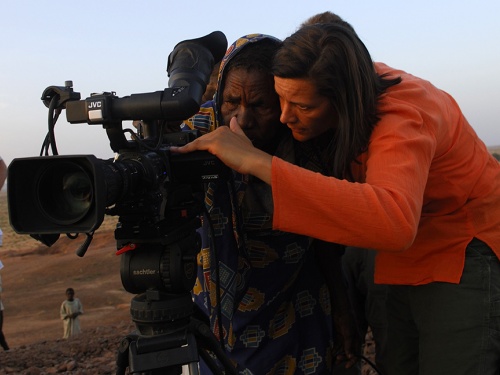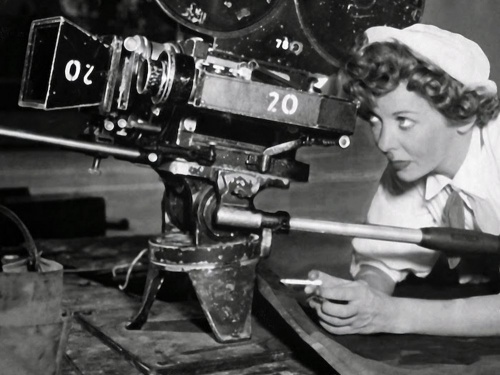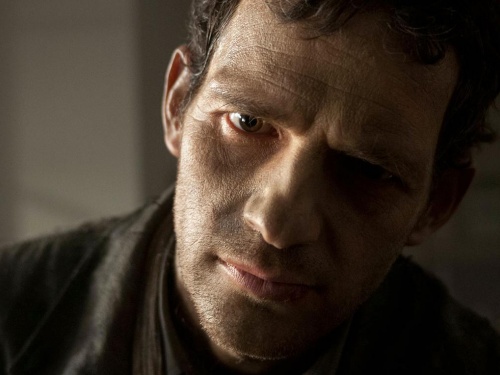Shooting Koudelka in the Holy Land
Gilad Baram on documenting the master photographer
Koudelka: Shooting Holy Land is a documentary following legendary Magnum photographer Josef Koudelka's four year photographic journey in Israel and Palestine. Filmmaker Gilad Baram spoke to ICA Bulletin manager Alex Krook ahead of a Q&A screening event at the ICA on 24 February.
How did you meet Josef Koudelka and become involved with his work?
It all started through a project initiated by French photographer Frédéric Brenner, who had this very ambitious idea of bringing a group of well-known photographers to the region. Brenner established a collaboration with the photography department at the Bezalel Academy of Arts and Design in Jerusalem, where I studied at the time, with the idea that students would become assistants of these photographers. It so happened that I was the first student to be picked out and Koudelka was the first out of twelve photographers to arrive. We were basically thrown together in a car and set off on an unknown adventure which became Koudelka's four-year project on Israeli and Palestinian landscape with an emphasis on the Israeli-built West Bank Wall and, gradually, my film.
At what point did the idea for making a documentary come about?
It was never my idea to make any film. Maybe the beginning of this should say, “This was not meant to be a film”. It was very apparent to me after about two or three days with Koudelka that the last thing he needs is an assistant: he’s a lone wolf and has been one his whole life. It’s him, his camera and the world around him. And that’s when I did what any photography student would probably do – I took out my camera.
At the beginning I was photographing the surroundings that we were in, but it was clear to me very quickly that the thing that interested me the most was Koudelka himself. The first time that I saw him photographing I was mesmerised: he goes into this kind of trance when searching for a frame. It's as if his whole body becomes a tool for it – the connection between his eye and the viewfinder becomes a connection between the viewfinder and his whole body. I started observing him through the tool I knew best, which was my own camera.
There was never an idea to make any film. Maybe the beginning of this should say, “This is not a film”
How did Koudelka react to the material initially?
It wasn't as if Koudelka didn't notice that I was turning my lens towards him. He came to me and said, “I will allow you to continue to do whatever you’re doing, I don’t really care what it is, but we’re going to have a very simple agreement between us: you can’t show this material to anybody, and if I want to do anything with the material you’re creating I have full access without any objection from you.” That was the unwritten contract between us which lasted for a very long time, until the moment he realised that I might have an idea of what this material might become. This was years after we first started working together.
I believe that the fact that I was using a stills camera (a Canon 5D Mk II) allowed Koudelka to feel very comfortable with the situation because he’s familiar with the apparatus, and the form of the tool was in no way intimidating for him. This is one of those cases where the choice of apparatus turns out to be a crucial element of the filmmaking itself.
How did you find the experience of documenting the Wall?
In many ways it was a life-changing experience. Many Israelis choose not to face the Wall, not to see what is in their own backyard. Even though I was attending protests against the building of the Wall before I met Koudelka, our joint journey enabled me to experience this gigantic structure in all its vastness, and moreover to witness what it meant to the other side and what impact it had on people’s everyday lives. In some way it helped me understand how the Wall and what it stands for slowly corrupts my own society. For me it was devastating, what can I say?
Koudelka found it very hard too, but for different reasons. I found his creative approach extremely interesting and in some ways refreshing to me as an Israeli, as he was looking at the Wall as an element in the landscape. His photographs do not contain human figures but at the same time do not exclude the human factor – on the contrary, what I find fascinating about his work is that it tells so much about people and their actions without having them as a present element in the frame itself. The remnants of their actions are definitely there: you can feel the violence, you can feel the disregard of anything but the intention of building a barrier.
He goes into this kind of trance when he searches for a frame, and his whole body becomes a tool for it
Did you run into any trouble with Israeli security forces during the project?
I expected much worse encounters than the ones we eventually experienced. We were photographing and filming all along the route of the Wall, so there are many different security agents who operate around there as well as cameras everywhere. We were constantly stopped and frequently questioned, but almost always we were allowed to continue photographing.
Once on the road to Hebron we stopped at the side of the road and Koudelka was photographing; it didn’t take two minutes for a group of soldiers to arrive and start shouting at us very aggressively. I tried to calm them down and I said, “Listen, he’s not a journalist,” and they looked a bit confused and replied, “What do you mean he’s not a journalist?” I told them, “He’s an artist, maybe you could google him?” The commander took out his phone and started looking at photos and said, “Wow, these are really good”. He went through Gypsies and Exile, and then he said, “Well you know… I guess you can go on.” What I realised is that it is the personal communication that one can have with those guys that is crucial and can change the whole situation.
His photographs do not contain human figures but at the same time do not exclude the human factor
Do you feel that the experience of working with Josef Koudelka changed your own photographic practice?
I think Koudelka is part of a generation that thinks about photography as a form of truth. I have deep respect for these masters yet from my perspective we are now in a different era, what is trendy to call a 'post-fact era', and photography is definitely part of that. There’s a certain post-truth idea around photography, and this is the field that I operate within and relate to as a photographer. I perceive my film about Koudelka as a tribute to a generation, a way of photography and a way of thinking about photography and living it that are almost gone. Perhaps it is a suggestion for some kind of bridge between these two worlds.
I learned more from Koudelka than I can probably ever say. What you learn from a great artist is not only something about art but a lot about life and the connection between art and life. Koudelka is an embodiment of that connection because there is no separation between his life and what he does. He is photography and his life is photography - and that is a huge lesson. ■
This article is posted in: Articles, Film, Interviews
Tagged with: Josef Koudelka, Koudelka: Shooting Holy Land, Gilad Baram, Documentary Cinema, Magnum Photographers, Israel, Palestine, West Bank











